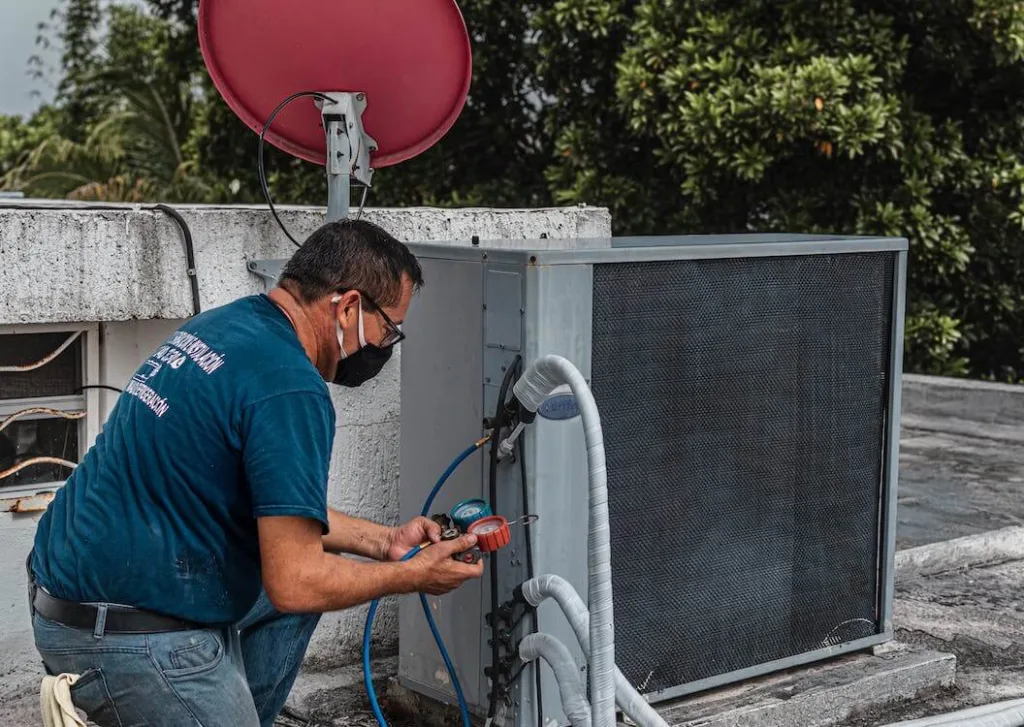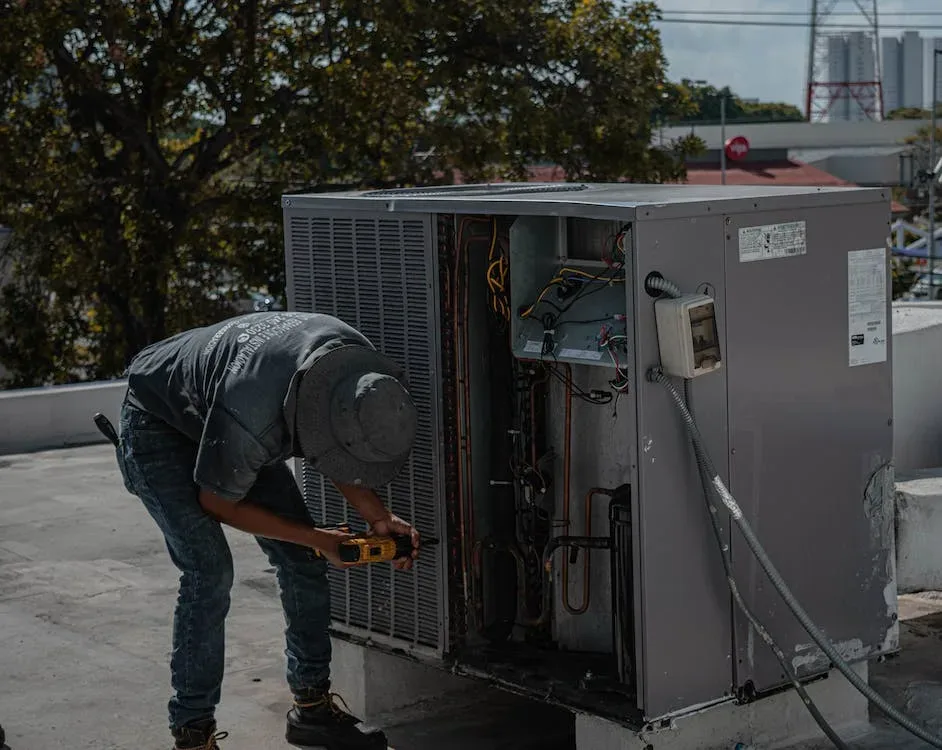
Are you considering installing a new air conditioning system in your home or business? From selecting the correct type of unit for your space to understanding any local zoning regulations that may apply, This comprehensive guide to air conditioning installation lays out everything you need to know to ensure a successful installation. We’ll also discuss how proper maintenance is essential in maintaining an efficient system over time. So let’s get started and arm yourself with knowledge before taking on such an important task.
Overview of Air Conditioning Systems
Air conditioning systems are a crucial part of modern life. They help keep us cool and comfortable during hot weather. Understanding the components and features of these systems is vital for selecting the right one.
AC systems use either electricity or refrigerants like Freon to produce cold air. The most common type of system uses an outdoor condenser unit that pumps cold air into indoor ducts or vents through fans, filters, and evaporators. Other AC types include window units, mini-splits, and central air conditioners with multiple zones.
Each AC system has unique components, including compressors, coils, fins, drains, and filters. Understanding how each component works together can help you identify potential installation issues. With this knowledge, you can select the best AC system for your home’s cooling needs without breaking your budget.
Selecting the Right System for Your Home
When selecting an air conditioner for your home, it’s essential to choose the right type and size of the unit. First, you need to consider the climate in which your home is located and its cooling needs. Knowing the temperature range can help you decide what air conditioner best suits your home.
Second, you’ll want to assess how much space each room requires for optimal cooling performance. This means considering the square footage of each room and any additional features or furniture that may affect airflow within the space. Finally, you must select a system with sufficient capacity to cool all areas of your home evenly and efficiently.
Finally, numerous energy-efficient options are available on the market today – from central AC units to ductless mini-splits – so it pays to do some research before committing to a purchase. Before choosing one option, consider all aspects of air conditioning selection, such as budget, noise level, installation complexity, and long-term maintenance costs.
Sizing Your System
Sizing an air conditioner correctly is important to maximize efficiency and comfort. You can use a sizing guide or an air conditioner size calculator to determine the correct size.
The first step is calculating the cooling capacity of an air conditioner. Next, measure how much heat can remove from a given area over time. This depends on square footage, insulation levels, sun exposure, window orientation, and ceiling height. With this information, you can narrow down the type and make of AC units that meet your needs.
When selecting an appropriate system size for your home, consider BTU (British Thermal Unit) ratings too. A higher rating does not necessarily mean more efficient cooling; however, if the system is too small, it won’t cool efficiently either. It’s best to get professional advice before deciding what size AC unit you should buy.
Finally, installing a larger-than-needed air conditioner may only sometimes be cost-effective as it could lead to energy waste and poor performance due to inadequate airflow through the ductwork.
Professional Installation Considerations
When considering a professional installation for your air conditioning system, there are several important factors to consider. Here we will cover the installation cost, the selection of an AC contractor, and the process involved in getting the job done.
- Installation Cost – The cost of installing an AC unit can vary significantly depending on the size and type you select and local labor rates. Contacting multiple contractors is essential when searching for an affordable and reliable option.
- Selecting an AC Contractor – It’s essential to evaluate each potential contractor thoroughly before making a decision. Consider their experience with similar jobs, customer ratings, professionalism, and overall reputation in the industry.
- AC Installation Process – Once you’ve selected a qualified installer, they’ll begin by estimating your space requirements and providing recommendations for which type of cooling system best fits your needs. From there, they’ll give you an estimated timeline for completing the job and any additional information needed throughout construction or repair work if necessary.
- Benefits Of Professional Installation – Hiring a professional to install your new air conditioning system provides peace of mind that it was completed correctly and efficiently while complying with all safety regulations set forth by local building codes and manufacturer’s instructions. A proper installation also ensures that your home stays cool during hot summer months without running up energy costs unnecessarily due to improper setup or maintenance issues down the line.

Maintenance and Energy-Saving Tips
It’s important to keep your air conditioning system well-maintained to ensure it works efficiently and is energy efficient. Regular maintenance helps avoid costly repairs and prolongs your AC unit’s life. Make sure you schedule an annual air conditioning service with a professional HVAC technician who can clean and inspect all parts of the system for any damage or wear.
Additionally, there are several tips you can follow to conserve energy when using your air conditioner. Try setting the temperature higher than normal during hot summer days; remember that every degree below 78 degrees Fahrenheit raises energy consumption by 8%. In addition, use ceiling fans or other portable fans throughout your home to help circulate cool air from your AC unit faster, so you don’t need to set it too low. Finally, ensure you replace the filters regularly – this will help improve efficiency and significantly reduce repair costs over time.
Troubleshooting Common Issues
Troubleshooting air conditioning installation problems can be daunting for those unfamiliar with the process. Fortunately, you can take several simple steps to diagnose and fix any issues quickly and efficiently.
Problem | Suggested Repair Tips |
Unit isn’t cooling properly | Check the thermostat settings |
Strange noises coming from unit | Clean or replace fan motors/belts |
Unusual smells when operating | Replace filters & clean coils |
Leaking water around unit | Check drain pipes & clear blockages |
Each issue will require different solutions depending on its root cause, so it is crucial to identify the exact problem before attempting repairs. If you need help to do this easily, contact an experienced technician with specialized knowledge in diagnosing and repairing air conditioners. They may also be able to provide additional advice on how to maintain your system and prevent future problems.
Conclusion
This ultimate guide to air conditioning installation is a big job and requires careful planning. It can be daunting, but with the right knowledge and guidance, you can ensure your new system is up and running quickly. Paying attention to detail and taking extra care will ensure that your installation goes smoothly and lasts for years.
At Tropic Air an air conditioning in Sarasota, we provide professional HVAC assistance, including installation, maintenance, and troubleshooting of your AC system. Rest assured your family’s comfort needs are met effectively and efficiently. Contact us today.



